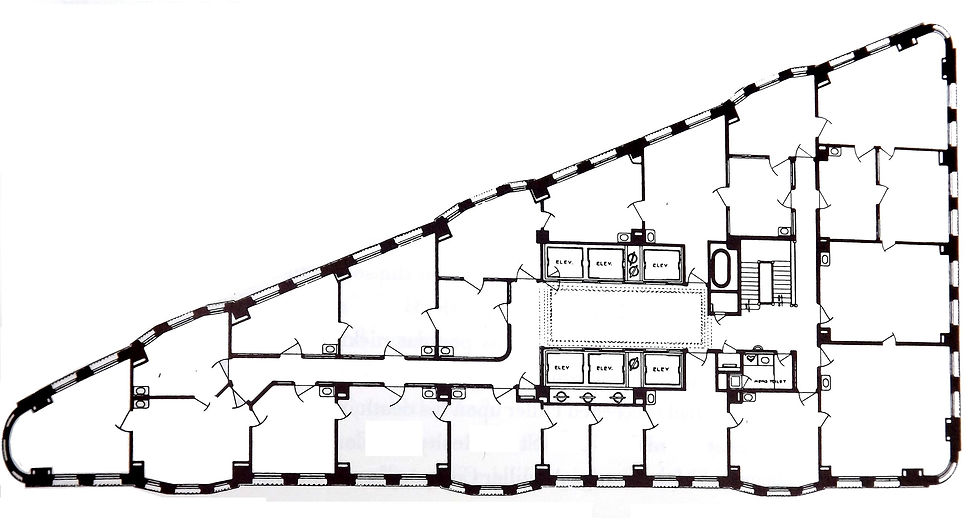In the bustling streets of New York City stands an architectural gem that has captivated the world for over a century. The Flatiron Building, with its striking triangular form, isn't just a skyscraper; it's a testament to visionary engineering and timeless design.
Why is the Flatiron building so famous?
A 'Flatiron': Built as the headquarters of the Fuller Construction company, the skyscraper was meant to be named Fuller Building. But locals soon dubbed it 'Flatiron' after its unusual shape, caused by the triangular plot.
Flatiron Facts 📚📐
Year of construction: 1902
Architects: D. H. Burnham & Co, Daniel Burnham, Frederick Dinkelberg
Facade: limestone & terra-cotta
Height: 22 stories, 87 m (285 ft)
Width: at the triangular vertex only 2 m (6.5 ft)
Structural system: steel-skeleton frame with masonry cladding
Location: 175 Fifth Avenue in the Flatiron District neighbourhood of borough of Manhattan, New York City

Engineering Ingenuity: The Birth of a Landmark
Constructed in 1902, the Flatiron Building emerged as a collaboration between the architectural prowess of D. H. Burnham & Co, helmed by Daniel Burnham and Frederick Dinkelberg. Rising proudly at 175 Fifth Avenue in the Flatiron District of Manhattan, its unconventional shape was not just happenstance but a result of the unique triangular plot it was built.
The Legend of the 'Flatiron' Building
Initially intended as the headquarters for the Fuller Construction Company, the skyscraper was slated to bear the name 'Fuller Building.' However, the locals, mesmerized by its distinctive form resembling a household flat iron, coined the endearing nickname 'Flatiron Building,' which endures to this day.
Unraveling its Engineering Brilliance
The Flatiron Building's fame extends beyond its unique silhouette. Its engineering brilliance lies in the utilization of a steel-skeleton frame, a revolutionary concept in the early 20th century. This innovative framework allowed for unprecedented height and stability, defying conventional construction norms of the time.
The structure's triangular shape, while iconic, presented engineering challenges. To counter wind forces and distribute loads efficiently, the engineers incorporated a robust steel framework, ensuring both strength and stability despite the building's slender profile.

Legacy and Enduring Influence
Beyond its architectural significance, the Flatiron Building stands as a beacon of innovation, inspiring generations of architects and engineers. Its pioneering design principles, notably the steel-skeleton frame, paved the way for modern skyscrapers worldwide, setting new standards in tall building construction.
Even a century later, the Flatiron Building continues to captivate admirers and remains a symbol of New York City's skyline, its timeless elegance standing as a testament to the fusion of engineering excellence and artistic vision.
An Enduring Architectural Icon
The Flatiron Building transcends its physical presence; it embodies an era of daring innovation and engineering prowess. From its inception in the early 20th century to its revered status today, this architectural masterpiece remains a testament to the fusion of form, function, and forward-thinking engineering—a timeless tribute to human ingenuity amidst the urban landscape of New York City.
The Flatiron Building, with its innovative design and enduring legacy, continues to be an emblem of architectural brilliance and engineering innovation in the heart of Manhattan.
Source: aviewoncities

